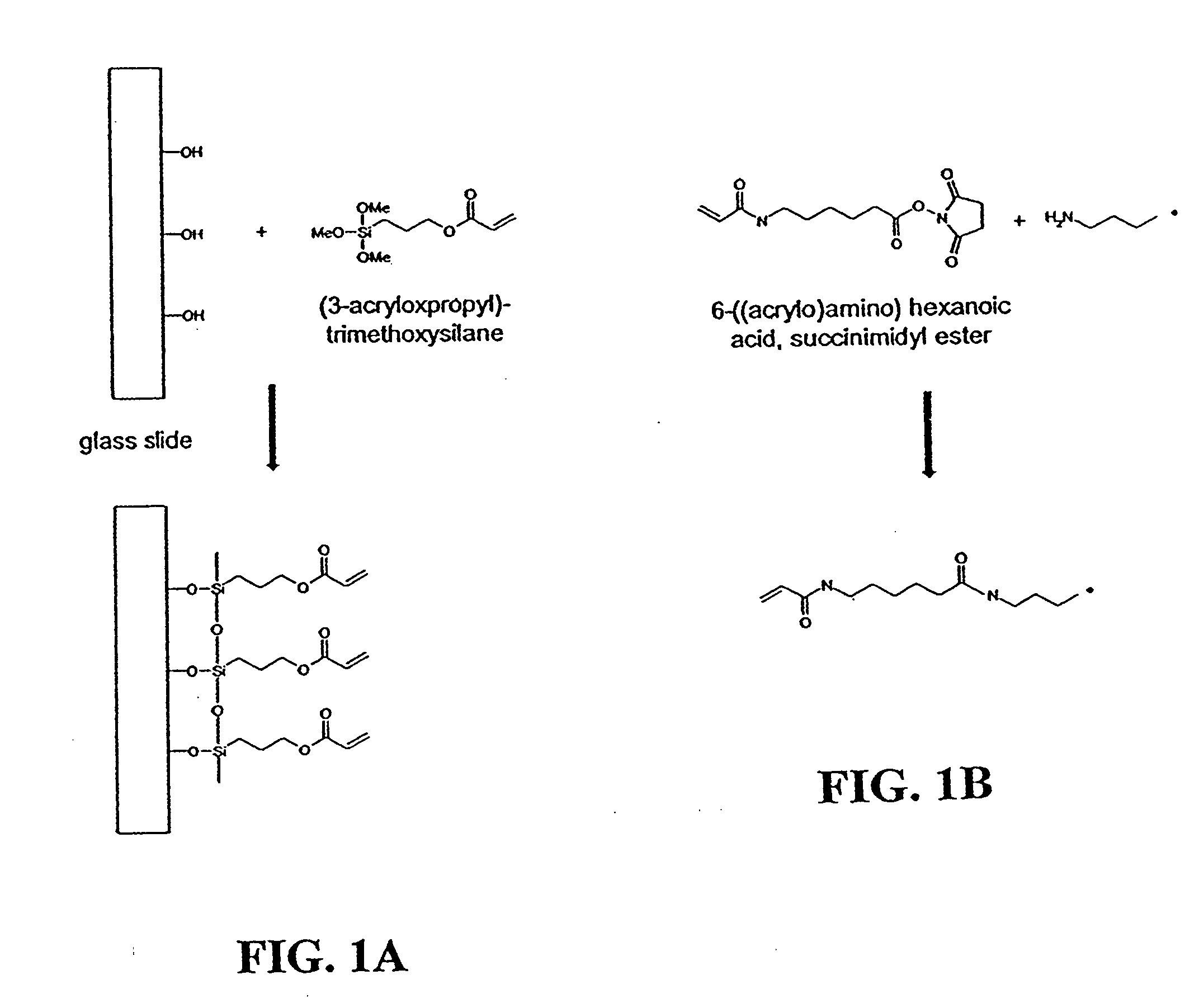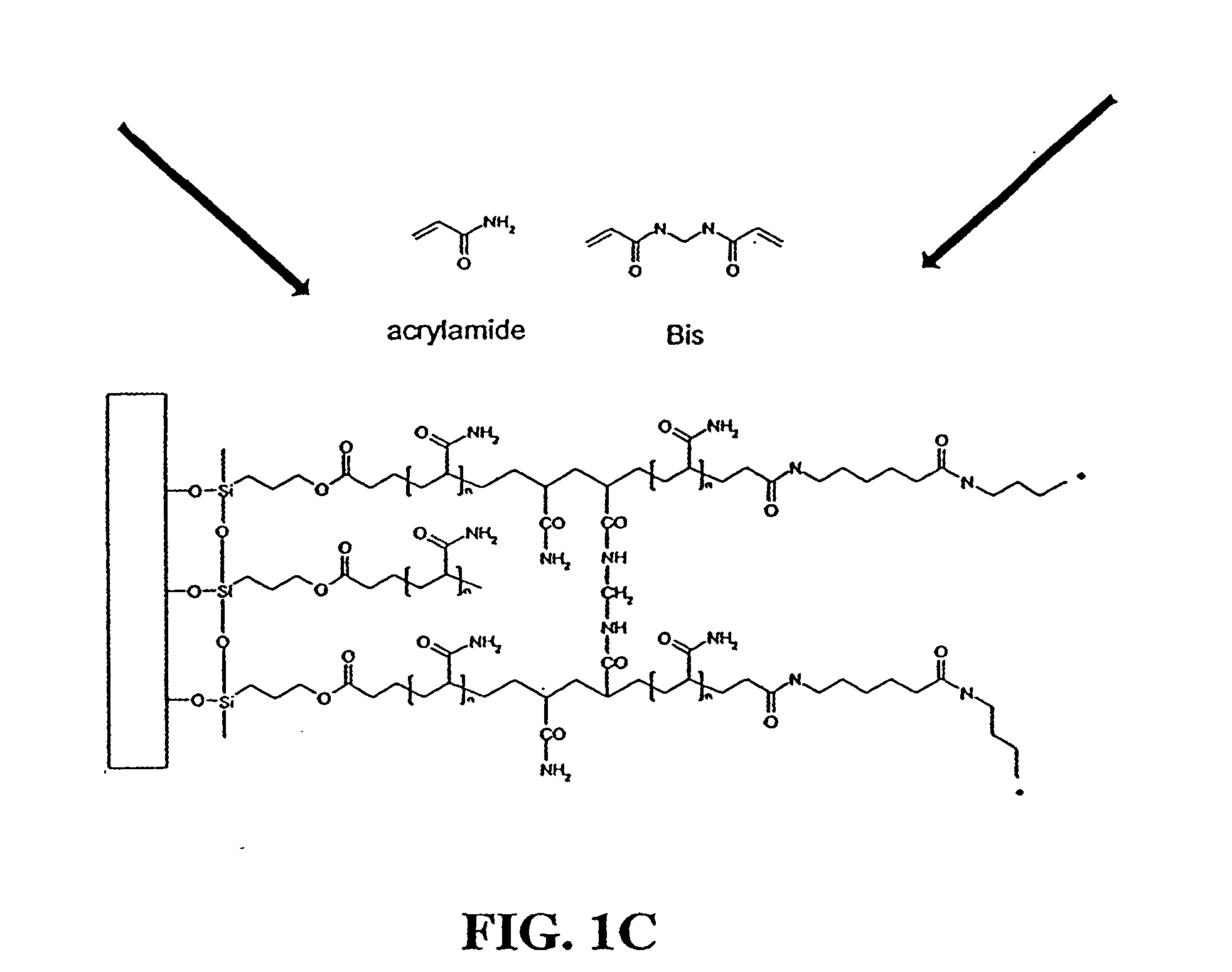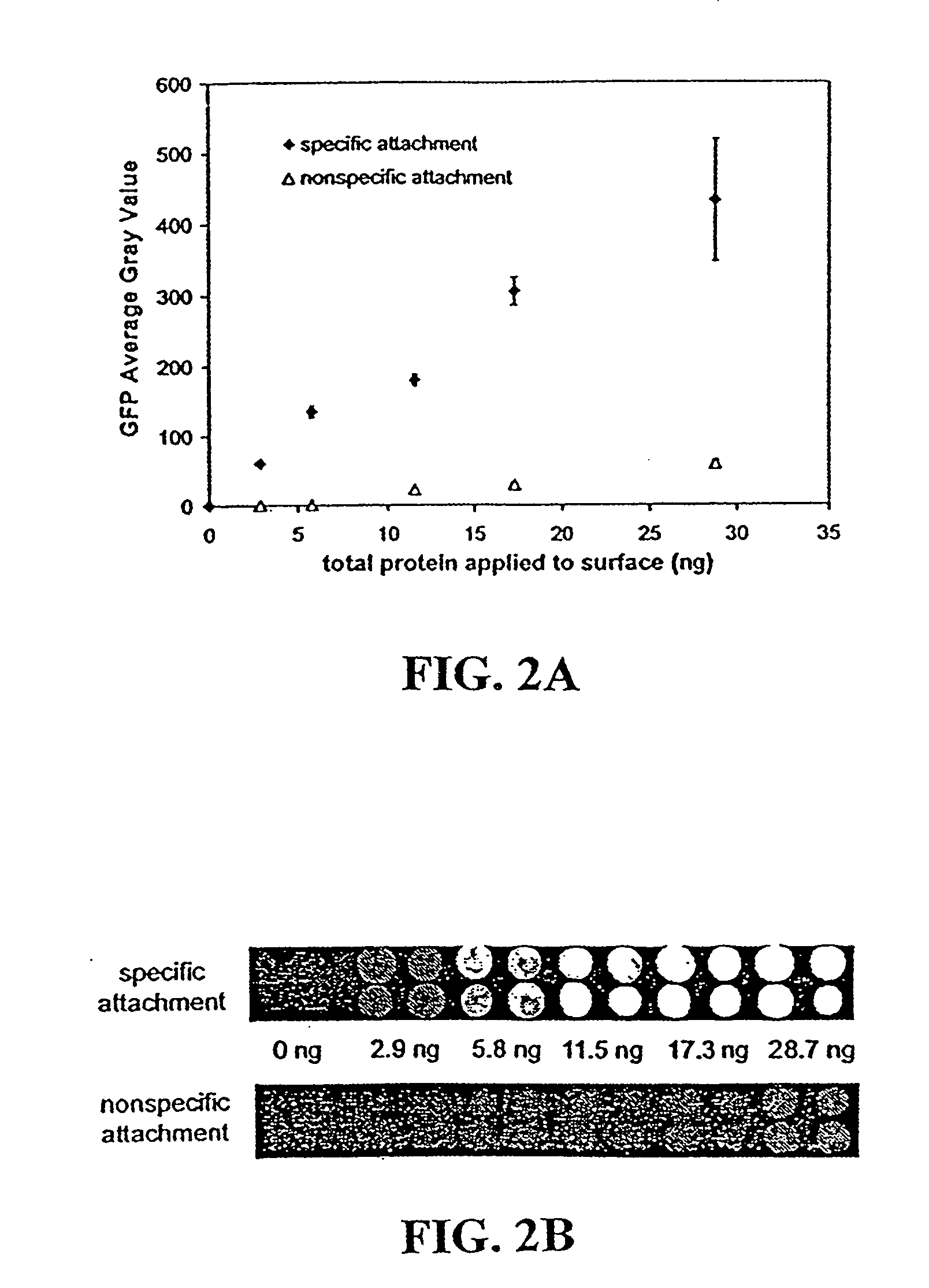Hydrogels for biomolecule analysis and corresponding method to analyze biomolecules
a biomolecule and gel technology, applied in the field of hydrogels for biomolecule analysis and corresponding methods to analyze biomolecules, can solve the problems of difficult scaling-up to yield large microarrays suitable for analyzing an entire proteome, and the analysis that rely solely on expression profiles does not provide a complete picture of cellular control mechanisms. , to achieve the effect of eliminating the need for purifying complex samples
- Summary
- Abstract
- Description
- Claims
- Application Information
AI Technical Summary
Benefits of technology
Problems solved by technology
Method used
Image
Examples
example 1
Preparation of Glass Surface
[0058] Glass microscope slides (Fisher Scientific, Hanover Park, Ill.) were cleaned in a 70 / 30 (v / v) mixture of H2SO4 / 30% H2O2 at 95° C. for 30 minutes. The slides were thoroughly washed with Milli-Q water (Millipore, Billerica, Mass.) and dried overnight at 140° C. To deposit the silane coupling agent on the surface, a 95 / 5 (v / v) solution of ethanol / Milli-Q water was prepared and brought to pH 5.0 with acetic acid. To the ethanol / water solution was added (3-acryloxypropyl)-trimethoxysilane (Gelest, Tullytown, Pa.) with stirring until a final concentration of 2% was reached. Clean glass slides were immersed in this solution for two minutes, rinsed by briefly dipping into ethanol, and dried overnight at room conditions. The slides were then stored in a desiccator at room temperature until needed.
example 2
Preparation of Fusion Proteins
[0059] The DNA sequence encoding a mutant green fluorescent protein (GFP-S65T) from Aequorea Victoria was amplified by PCR with primers containing BamH1 restriction sites flanking the GFP gene and cloned into the BamH1 restriction site of the pGEX-4T-1 vector (Amersham Biosciences, Piscataway, N.J.). This plasmid was transformed into E. Coli DH5α cells and the correct insertion of the GFP gene was confirmed by the isolation of colonies capable of producing the fluorescent fusion product. (Vectors containing the GFP-S65T insert are also available commercially from BD Biosciences, San Jose, Calif.; see also GenBank Accession No. U36202.)
[0060] For production of the GST-GFP fusion protein, the cells were grown to mid-log phase at 37° C. in 2× YT medium (16 g tryptone, 10 g yeast extract, 5 g NaCl, pH 6.6 in 1 (one) liter of water). The culture was then cooled to 30° C. and protein expression was induced by addition of isopropyl-β-D-thiogalactopyranoside ...
example 3
Labeling of Fusion Proteins
[0062] Purified fusion proteins were transferred to 100 mM sodium bicarbonate, pH 8.3 buffer and brought to a concentration of approximately 3 mg / ml through centrifugal concentration. Protein concentration was measured with a Pierce BCA protein assay kit (Pierce, Rockford, Ill.). Fusion proteins were then labeled with 6-((acryloyl)amino) hexanoic acid, succinimidyl ester (i.e., succinimidyl-6-[(acryloyl)amino]hexanoate) (Molecular Probes, Eugene, Oreg., catalog no. A20770) according to the manufacture's directions. Briefly, 100 μl of a 10 mg / ml solution of 6-((acryloyl)amino) hexanoic acid, succinimidyl ester in DMSO was slowly added to 1 ml of the fusion protein. The reaction was allowed to proceed for one hour at room conditions with maximum stirring. The reaction was then quenched by adding 100 μl of freshly prepared 1.5 M hydroxylamine, pH 8.5. The quenching reaction was allowed to proceed for one hour at room conditions. The acrylic-labeled fusion pr...
PUM
| Property | Measurement | Unit |
|---|---|---|
| diameter | aaaaa | aaaaa |
| fluorescence exposure time | aaaaa | aaaaa |
| fluorescence exposure time | aaaaa | aaaaa |
Abstract
Description
Claims
Application Information
 Login to View More
Login to View More - R&D
- Intellectual Property
- Life Sciences
- Materials
- Tech Scout
- Unparalleled Data Quality
- Higher Quality Content
- 60% Fewer Hallucinations
Browse by: Latest US Patents, China's latest patents, Technical Efficacy Thesaurus, Application Domain, Technology Topic, Popular Technical Reports.
© 2025 PatSnap. All rights reserved.Legal|Privacy policy|Modern Slavery Act Transparency Statement|Sitemap|About US| Contact US: help@patsnap.com



